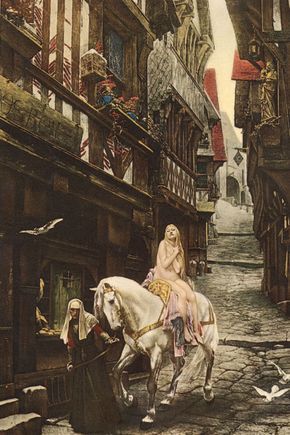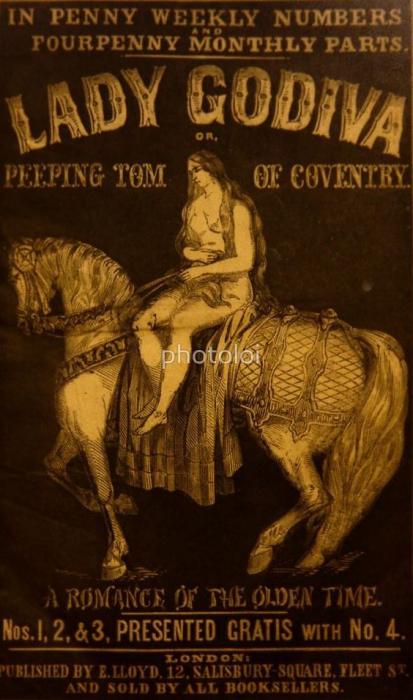|
Helen F
Warrington |
61 of 102
Sun 18th Oct 2020 12:48pm
I agree completely that accurate dating is to be taken with a massive pinch of salt. Although I imagine the Vatican or some smart Alecs have done work trying to accurately date events. Scientific historians have done work trying to sync different countries time lines. If you can get a daily account continuously, then you can date things accurately. If there is then a shared event eg eruption, meteorite, you can improve dating in patchy records by linking them to continuous ones. Climate research may also play a part by tying climate events to certain years.
Births may be more suspect than deaths as by that time people were more noteworthy. Even more dubious is the saint's arm. I'm sure that there was an arm but the trade in relics was highly corrupt.
Kaga, I agree, pre 1066 Rome would have been a mix of reused/robbed stone, repurposed buildings and new materials but it would have been a lot more sophisticated than England. Yes, many of the things we associate with luxurious Rome are later additions although I believe that they had a fair number of ancient Greek statues. From the engineering point of view the Roman concrete dome of the Pantheon is the finest work of art, not the later decorations. There are surviving examples of Anglo-Saxon wall art but it's not very advanced. France wasn't much different to England if surviving Norman wall art is anything to go by but I couldn't tell you what Rome would have had at that time.
Painting someone six hundred years ago is easy as there is nobody to tell you got it wrong. |
| Local History and Heritage - Lady Godiva | |
|
Kaga simpson
Peacehaven, East Sussex |
62 of 102
Wed 30th Dec 2020 10:44am
Helen. Good morning, hope you're well.
You asked me to read post 45 about Lady Godiva.
On the first page there are two pictures of her - the first was a painting of her, 1898, sitting straddle-legged, the second much later sitting side-saddle.
So why did Coventry adopt the side position?
Almost impossible to ride bare backed without a side saddle and not fall off
Almost impossible to ride side saddle and fall off.
A legendary story in a modern setting, doesn't make sense to me. |
| Local History and Heritage - Lady Godiva | |
|
Helen F
Warrington |
63 of 102
Wed 30th Dec 2020 11:06am
And a good morning and good health to you too Kaga.
The story of Godiva's ride is highly likely to be a myth devised many years after her death. There are no contemporary images from her time or even from when the myth was probably concocted, so all images are guesswork. The level of knowledge underlying the guesses would vary from artist to artist. Side saddle was used in Godiva's time and was needed because of the nature of female clothing and modesty. I believe that the horses used a stride called 'ambling gait' which wasn't as bouncy as a canter and could be maintained over long distances for both horse and rider. It was well suited for poor or no roads.
So basically, the paintings of Godiva are all fantasy without your knowledge of riding. |
| Local History and Heritage - Lady Godiva | |
|
Kaga simpson
Peacehaven, East Sussex |
64 of 102
Wed 30th Dec 2020 1:23pm
Helen
Of course it was a myth, long after her time. I would dispute side saddle in her time, not invented, never saw a pommel, and it was all straddle riding for centuries, even the ladies camp followers rode straddle in olden pictures, and they are a couple of centuries later than her lifetime. No, the painting was closer to her time than the sculpture, yet on the same page as her would be history.
And ladies clothing and horses goes back in history too.
I remember an argument just after the statue was placed in Broadgate in 1949, most people expected her to be astride the animal as in that painting, and as the myth, not modern. Few people had seen anyone ride side saddle, even in 1949, believe it or not, nearly all riding schools taught astride.
|
| Local History and Heritage - Lady Godiva | |
|
Helen F
Warrington |
65 of 102
Wed 30th Dec 2020 2:44pm
You may well be right but the reference I got was that the side saddle dated back to the middle ages, which started in the 5th century. Travelling long distances were slow affairs, possibly even at walking pace so ladies didn't need to properly ride.
Sidesaddle
The earliest depictions of women riding with both legs on the same side of the horse can be seen in Greek vases, sculptures, and Celtic stones. Medieval depictions show women seated aside with the horse being led by a man, or seated on a small padded seat (a pillion) behind a male rider. Ninth century depictions show a small footrest, or planchette added to the pillion. These designs did not allow a woman to control a horse; she could only be a passenger.
In Europe, the sidesaddle developed in part because of cultural norms which considered it unbecoming for a woman to straddle a horse while riding. This was initially conceived as a way to protect the hymen of aristocratic girls, and thus the appearance of their being virgins. Further, long skirts were the usual fashion and riding astride in such attire was often impractical, awkward, and could be viewed as immodest. However, women did ride horses and needed to be able to control their own horses, so there was a need for a saddle designed to allow control of the horse and modesty for the rider.
The earliest functional "sidesaddle" was credited to Anne of Bohemia (1366-1394). It was a chair-like affair where the woman sat sideways on the horse with her feet on a small footrest. The design made it difficult for a woman to both stay on and use the reins to control the horse, so the animal was usually led by another rider, sitting astride. The insecure design of the early sidesaddle also contributed to the popularity of the Palfrey, a smaller horse with smooth ambling gaits, as a suitable mount for women. |
| Local History and Heritage - Lady Godiva | |
|
Kaga simpson
Peacehaven, East Sussex |
66 of 102
Thu 31st Dec 2020 12:43pm
Thank you, Helen. Palfrey, old English name for any type of docile horse that you could trust to stay calm. |
| Local History and Heritage - Lady Godiva | |
|
Kaga simpson
Peacehaven, East Sussex |
67 of 102
Sat 2nd Jan 2021 11:41am
We have lately seen a Godiva pageant with "the lady" as a Saxon countess riding after the fashion of ladies in our time, sitting on a horse, habited with a side saddle.
Such a thing is an absurdity. Saxon ladies are represented in early manuscripts drawings as riding exactly the same as men do now, and even so late as the time as Richard II.
You observe, my dear friend, that when some ladies ride
How uneasy they sit, how they lean to one side
This they owe to their fears, or the make of their saddle
In times far remote Britain's fair rode a-straddle
In the reign of King Richard the Second I mean
A side-saddle came in with Anne, his young Queen
|
| Local History and Heritage - Lady Godiva | |
|
Prof
Gloucester |
68 of 102
Tue 26th Jan 2021 11:21pm

|
| Local History and Heritage - Lady Godiva | |
|
Prof
Gloucester |
69 of 102
Sun 7th Feb 2021 11:43pm

|
| Local History and Heritage - Lady Godiva | |
|
Kaga simpson
Peacehaven, East Sussex |
70 of 102
Mon 8th Feb 2021 10:29am
Prof. What was it, some kind of comic, and when? I can't remember that one. |
| Local History and Heritage - Lady Godiva | |
|
Prof
Gloucester |
71 of 102
Mon 8th Feb 2021 9:01pm
Dream, I think it must be Victorian, says available from all booksellers. I do not know more about it, but I thought it was of interest! |
| Local History and Heritage - Lady Godiva | |
|
Dreamtime
Perth Western Australia |
72 of 102
Tue 9th Feb 2021 2:40am
Thanks anyway, Prof. Kaga, take note. |
| Local History and Heritage - Lady Godiva | |
|
Kaga simpson
Peacehaven, East Sussex |
73 of 102
Tue 9th Feb 2021 9:21am
Prof, seems nothing ever showed in Coventry. |
| Local History and Heritage - Lady Godiva | |
|
Midland Red
|
74 of 102
Tue 9th Feb 2021 2:18pm
On 8th Feb 2021 10:29am, Kaga simpson said:
Prof. What was it, some kind of comic, and when? I can't remember that one.
Book, titled "The Lady Godiva or Peeping Tom of Coventry", a rare Penny blood issued in 31 weekly numbers, Edward Lloyd, English, 1849. |
| Local History and Heritage - Lady Godiva | |
|
Prof
Gloucester |
75 of 102
Tue 9th Feb 2021 7:05pm
Thanks MR for adding the information. Great! |
| Local History and Heritage - Lady Godiva | |
This is your first visit to my website today, thank you!
4,127,627Website & counter by Rob Orland © 2024
Load time: 612ms